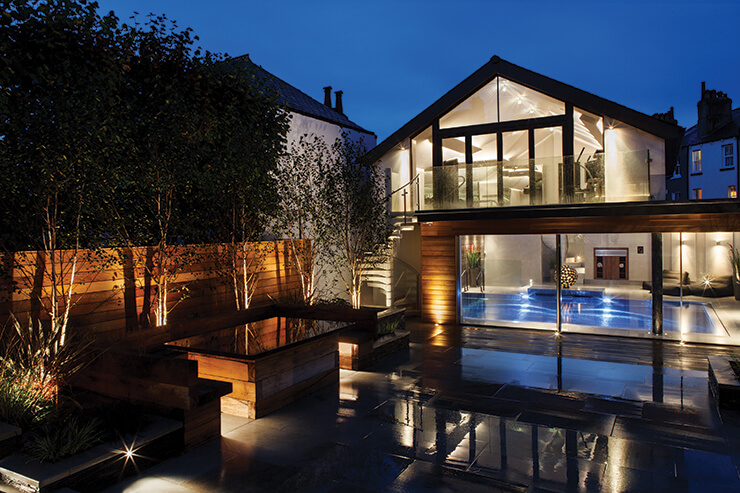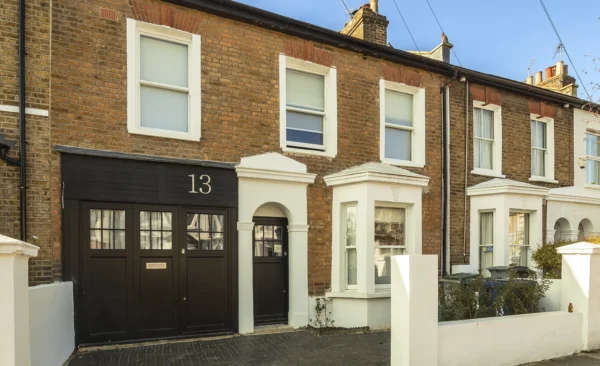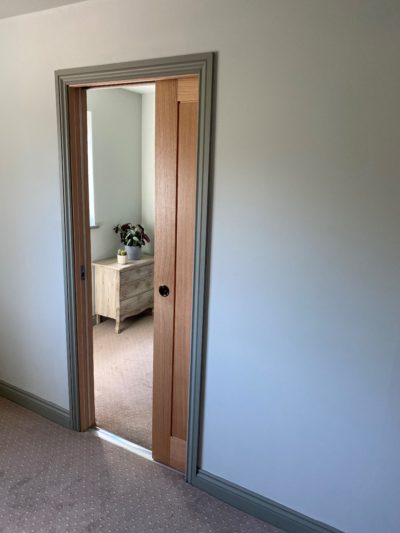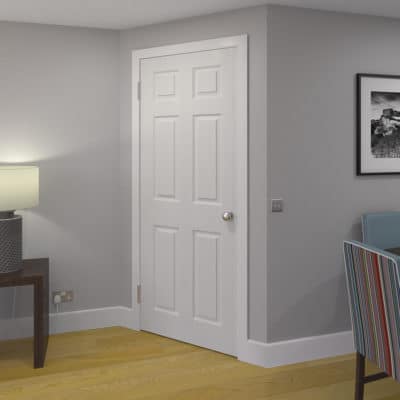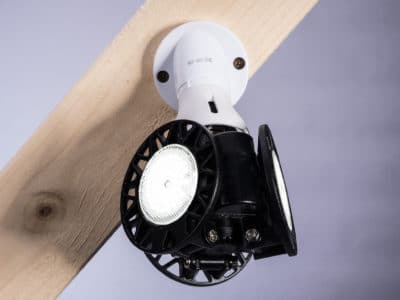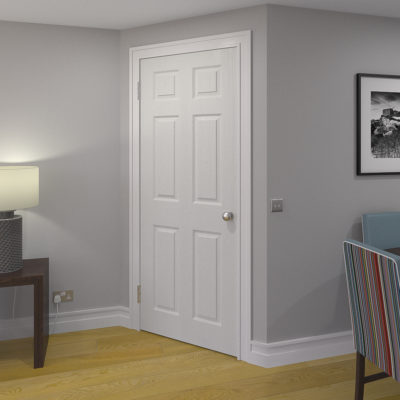Lighting Cost Guide
Most of us struggle to get the quality, frequency and variety of artificial lighting ideally balanced in our homes, especially if these decisions are being made late in the chaos of a building site.
It’s quite an art to get your lighting right – an ill-thought through design reliant on the common recessed spotlight and dimmer switch combination is unlikely to produce an aesthetically pleasing result.
So it’s much better to have help early on, carefully considering how each room in the house will be used at different times throughout the day. Perhaps, working up mood boards during this stage could help you figure out what you’ll need.
| Find the perfect finishing touches for your project at Build It Live. Watch live presentations on a variety of self build and renovation topics, browse thousands of products and get your specific questions answered.
Build It Live takes place three times a year in Kent, Oxfordshire and Exeter. The next show will be on 8th and 9th June 2024, in Bicester, Oxfordshire. Claim a pair of free tickets today and start planning your visit. |
Measuring light intensity: how many Lumens do you need?
Manufacturers will label bulbs (known as lamps by the trade) in terms of the products’ Lumen output, Lux intensity and their Kelvin shade/warmth. These are how different elements of the light is measured: brightness in Lumens; and intensity (or spread per m2) in Lux.
To put this into context, 800 Lumens generally does well to replicate normal daylight inside the home. The Kelvin (K) scale works to identify the tone of the light, with the warmer yellow/orange tints set at around 2,000K-3,000K and colder white/blue hues at 4,000K-8,000K.
Many self build homes include an open-plan kitchen, dining and family zone as the central hub, where different lighting demands are required as the daily routine evolves – task lamps in the kitchen, relaxed/warm illumination at the dining table and a cosy, fireside ambience for watching movies on the sofa.
Experienced interior designers taking a holistic approach to the artificial illumination will include a mixture of different fittings.
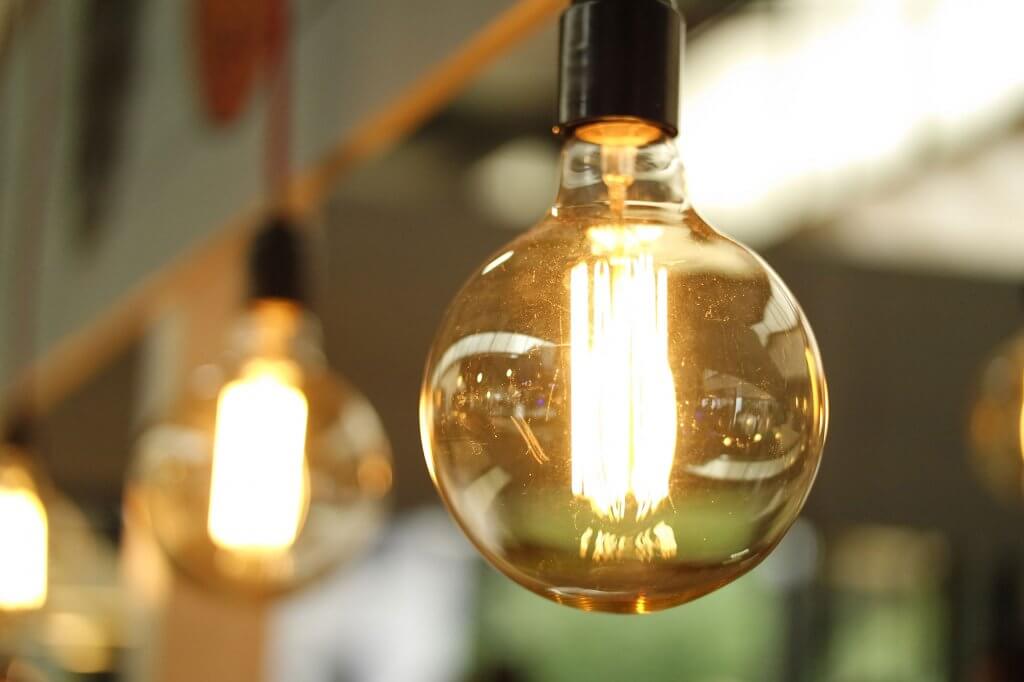
An interior designer will look at the room objectively and make sure the proposed scheme delivers to the functionality the owners want. What’s more, a professional can help you save money. People sometimes feel an interior designer will be expensive and not fit with their budget. The reality is that hiring someone who really comprehends the subject will eliminate a lot of error, and therefore expense. They fully recognise how to cost items and are very savvy at balancing out where you need to put your money. Learn more: Hiring an Interior Designer for your Project |
Think overhead lighting to provide directional wash over wall and floor surfaces, uplighters to do the same with walls and ceilings, pendants to highlight features and table lamps to soften the mood.
Directional lamps can help to reduce glare, while dimmers are useful for softening intensity and the general layering of light will create striking architectural shadows thanks to strategically placed features, blinds and curtains.
It’s worth bearing in mind that the colour of your walls and ceilings will contribute to the amount of reflection – for instance, darker hues tend to absorb rather than transfer.
Low voltage vs low energy
Many homeowners struggle with the difference between low voltage and low energy.
Low energy means the lamp will produce the required levels with a reduced amount of consumption, which is measured in watts (w).
Low voltage is a safety option; normal supplies run at 230V (volts), which is the current pressure being driven through the cables.
This pressure starts life at a power station at around 400kV (kilo-volts), stepping down at other transformer stations as it gets closer to houses until it ultimately reaches 230V as it enters our buildings.
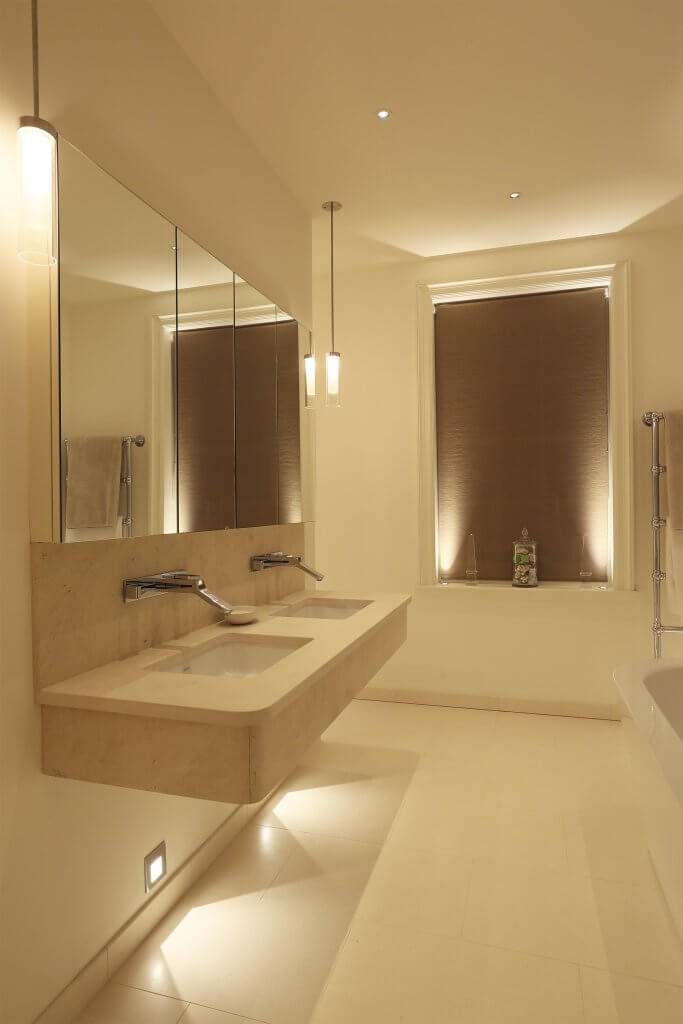
Layered illumination will add impact, but requires careful consideration. Shown here are John Cullen Lighting’s handmade Grissini Pendants, Lucca uplights and Oslo floorwashers
Internally, we may choose to reduce this pressure further where it enters a wet zone in the house (ie bathrooms and kitchens), say from 230V to 12V for recessed lighting.
To achieve this you’ll need local transformers positioned just before the fitting connection.
However, the lamps in our bathrooms still require the same number of watts to produce the light, so it’s the flow of electricity (measured in amps) that will need to increase to compensate
for our drop in voltage (amps x volts = watts).
How many light fittings do you need?
Conventional lights are connected to a circuit (either a ring/loop or a radial, which travels in one direction) that feeds to the consumer unit (the fuse board). There are usually separate circuits for ground and first floors – there are likely to be several in each storey in larger properties.
Each circuit is protected by a 6-amp miniature breaker (MCB) that works to keep it safe from overload. The whole system is protected by a minimum of two residual circuit devices (RCDs) that are there to guard against any earth leakage (and human shocks).
The below table is a rough template for how many fittings are needed in different rooms – it’s easy to see how numbers can escalate. Adding a porch light and then four external flood lights would tip the total over 100 with around 25-30 light switches.
| Type of light fitting/room | BED 1 | BED 2 | BED 3 | BED 4 | BATH 1 | BATH 2 | WC | HALL & LIVING | KITCHEN | UTILITY | DINING | SITTING | STUDY |
|---|---|---|---|---|---|---|---|---|---|---|---|---|---|
| Spotlight | 6 | 6 | 2 | 10 | 10 | 6 | 6 | ||||||
| Wall & table lights | 2 | 2 | 2 | 2 | 2 | 2 | 1 | 2 | 4 | 4 | 2 | ||
| Pendant lights | 2 | 2 | 2 | 2 | 1 | 2 | |||||||
| Strip lights | 2 | 2 | 2 | 2 | 4 | 1 | |||||||
| Total Lights | 6 | 6 | 6 | 6 | 8 | 8 | 3 | 12 | 14 | 6 | 5 | 7 | 8 |
| Total switches | 3 | 3 | 2 | 2 | 1 | 1 | 1 | 3 | 2 | 2 | 2 | 2 | 1 |
Lighting costs
As with all building products, prices vary enormously; the cost of different light fittings presented below are purely a guide.
Although many folks leave it to the electrician to supply these, if lighting is important to you then it’s better to visit suppliers and look into the options – much like you would with other elements, such as bathroom fittings.
It’s difficult to isolate the overall labour costs of having your artificial illumination installed as this will be carried out as part of the overall electrical installation at both the first and second fix stages.
However, lighting will represent about half of the electrician’s work in the house and it usually takes two weeks for first fix and another two for second and final commissioning.
| Type of light fitting | Total in home | Notes | Average rate | Total Cost |
|---|---|---|---|---|
| Spotlights | 46 | Recessed spotlight can start at £1.60 with directional at £4.95 & fire rated at £5.95 | £5 | £230 |
| Wall & table lights | 25 | Plug sockets for table lights would be £2.50; some two-way uplights at £35 | £17 | £425 |
| Pendant lights | 11 | A pendant with flec could cost £1.50 and some feature pendant fittings £100 | £50 | £550 |
| Strip lights | 13 | From a small 250mm light at £4 up to a task strip light at £12 | £8 | £104 |
| Switches | 25 | Backing boxes at £1 and switches from £5.30 for 3-gang | £4 | £100 |
| External lights | 5 | A robust LED spotlight with PIR | £35 | £175 |
| LED Lamps | 95 | For the internal light fittings; 5w spot at £6.50 and a 1m strip at £10 | £7 | £665 |
| Ancillaries | 1 | Cables, flex, low voltage transformers, clips, etc | £400 | £400 |
LED lamps today
Light emitting diode (LED for short) lamps have been around for decades, but have only dominated the market in the past five to 10 years.
LEDs are more efficient in generating light from energy and do so without creating much heat – as a direct comparison.
You will only need a 5w (watt) LED to generate the same light as a 50w tungsten spot lamp or a 60-100w incandescent unit (which the government aimed to phase out by 2011 because of carbon reduction targets).
This is great news for homeowners as the overall electrical load will be lower, meaning bills are cheaper, too. The success of LEDs means manufacturers have found a way to produce them across most of the Kelvin scale; we can now enjoy warm lighting, as opposed to the crisp, cool, bluer shades that had previously characterised these units.
Smart lighting & upgrade options
Smart technology is fast becoming a more affordable choice, with lighting controls at the heart of the automated home. Common options include multiple push button switches where three, four or five pre-set mood levels can be selected, each then graded with a dimmer.
These require independent cabling and a central controller/relay for each zone (usually one room); however, one criticism of these systems is that a slight delayed response can cause the user to keep pressing buttons. Control via mobile phones and tablets is also an option, with some systems allowing you to change things even when you’re not home. For more on smart lighting see page 87.
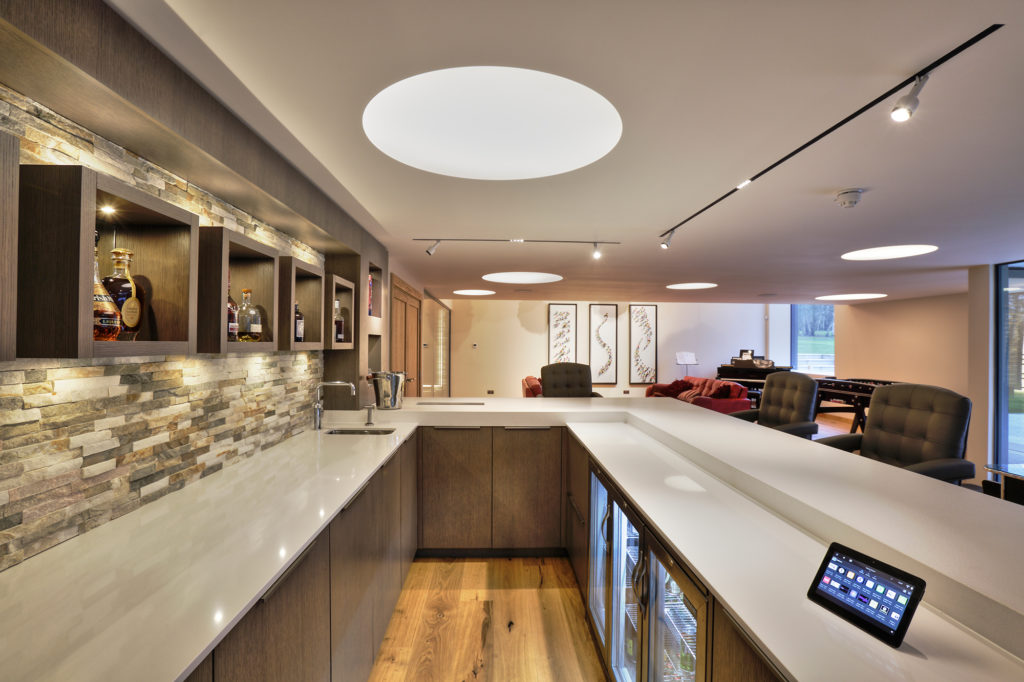
The homeowners of this stunning new build benefit from Control4’s Mockupancy. The smart technology learns their daily routine and replays lighting scenes, entertainment scenes and even closes the blinds, all whilst the homeowner is away. Read this case study: Smart Home Technology & Audio Visual System |
In addition to purely technological upgrades, you may want to incorporate some more theatrical lighting, such as illuminated wall recesses or a perimeter channel around
a dropped suspended ceiling.
In combination with a central chandelier, these features can help to create a bit of drama and atmosphere. Stair lighting is increasingly common and subtle directional illumination can also help to separate zones within an otherwise open plan layout.
Outdoor lighting
Not simply a way to guide you to the front door when you get home in the dark, external lighting can be used to enhance garden features.
Rather than closing the blinds or curtains, an internal space can be enhanced by switching on outdoor lighting so that you can see a dramatically staged set – especially where there might be a pond, pergola, pool or illuminated specimen trees.
How can I get my outdoor lighting scheme right?First you’ll have to plan in advance and in detail. This means understanding the elements you want to illuminate and making provisions early enough in the build process to achieve it. It’s not enough to say that you want a light in a particular location; you need to know what fitting, too, so you can run the right cable, create the right installation points and fit the appropriate drivers. More from Brilliant Lighting designer Melanie Shaw: Outdoor Lighting Design Ideas |
Obviously there is some expense incurred with external lighting but its installation is becoming increasingly easy thanks to robust external sockets and switches, flexible armoured cables (which can travel through planters) and uplighters mounted on spikes.
A useful recent innovation is the ability to set the sensitivity and time delay for some external security lights remotely by a device operated at ground level rather than having to do this from a ladder.
Top Image: Using a variety of fittings, such as pendant lights and recessed downlights, will help you zone areas in open-plan spaces. This kitchen-dining room lighting design is by Brilliant Lighting.
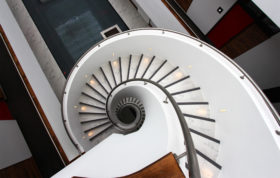
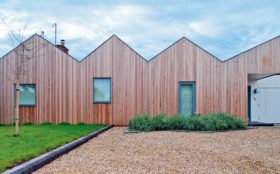






























































































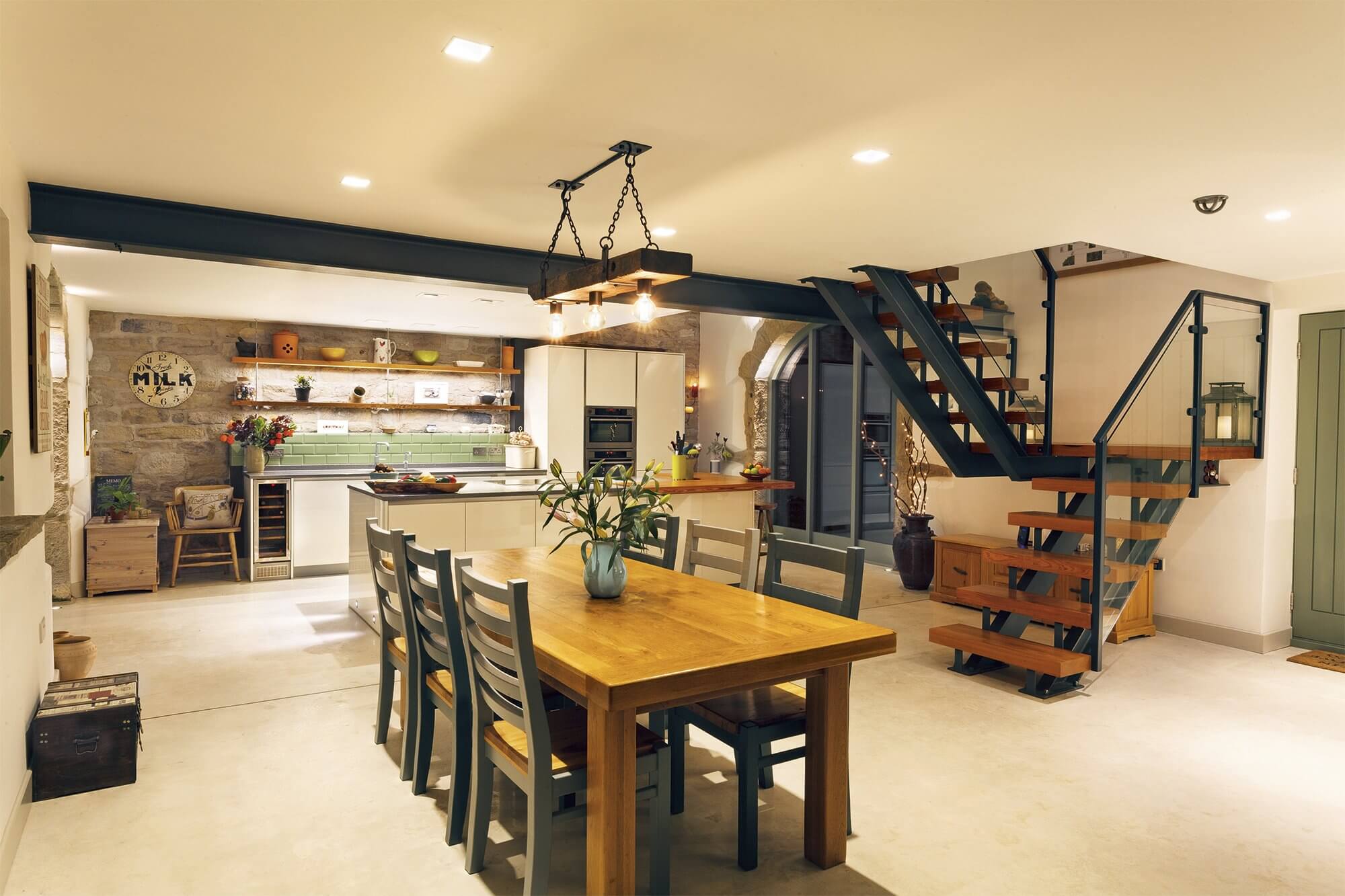
 Login/register to save Article for later
Login/register to save Article for later

